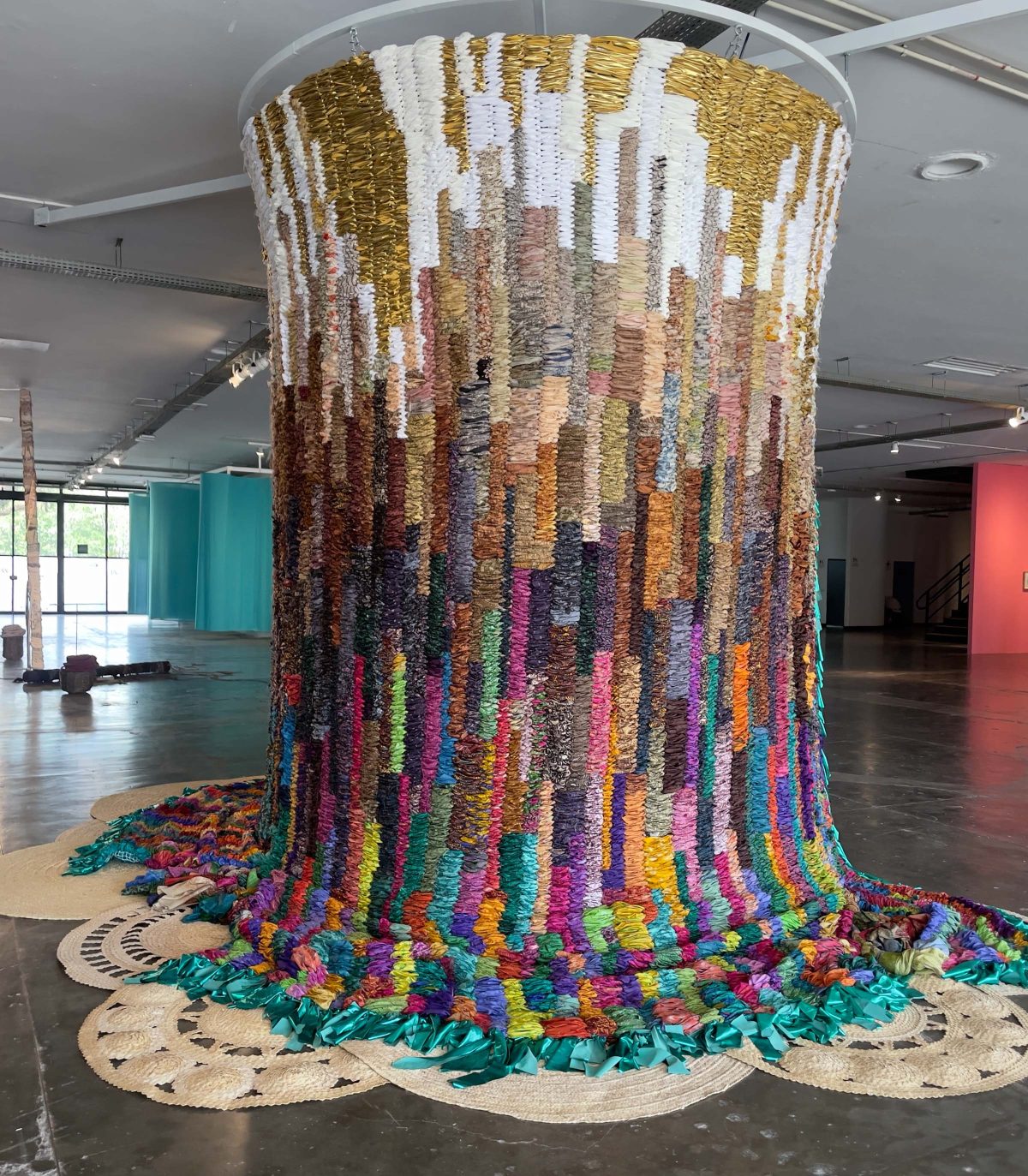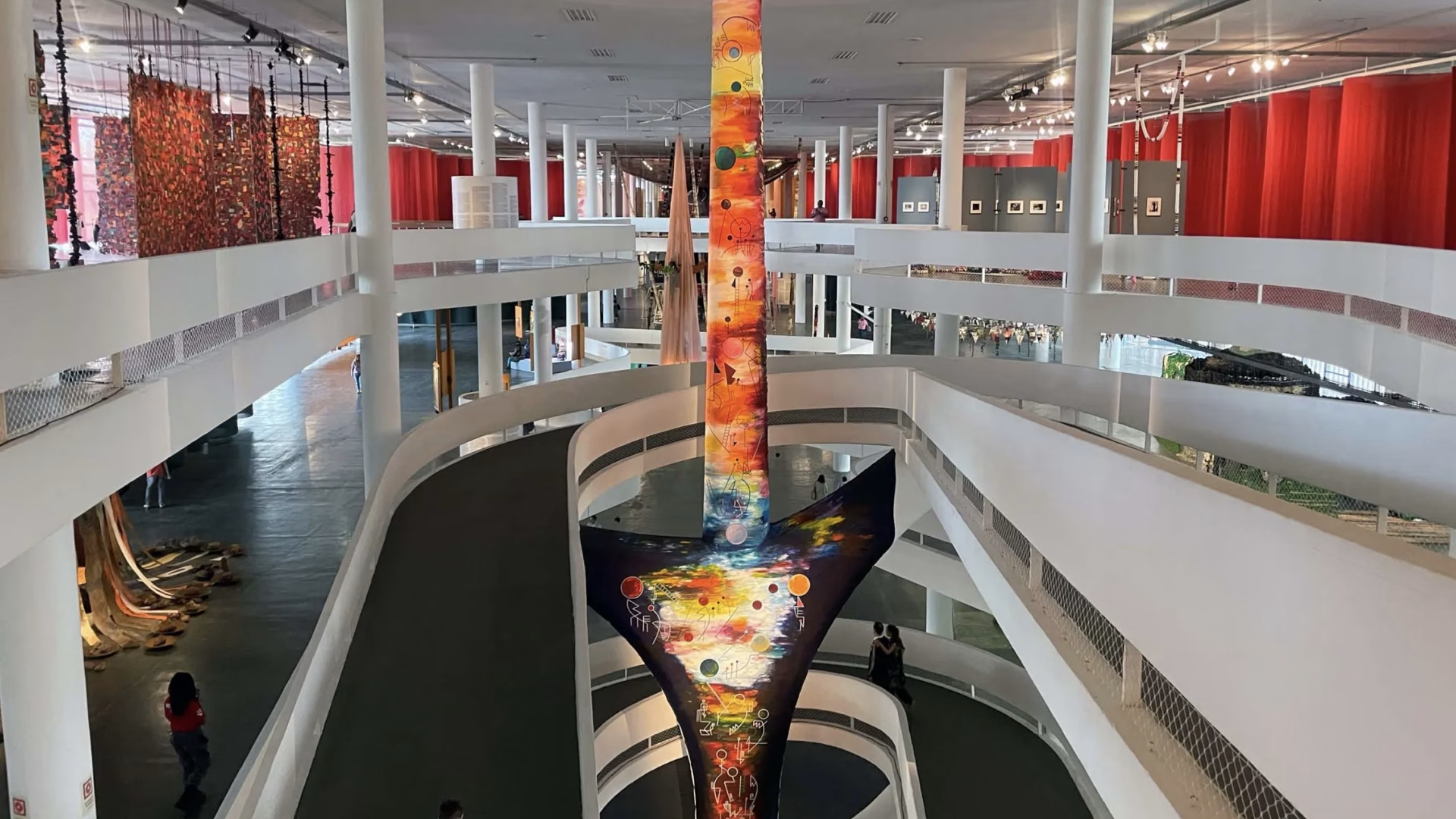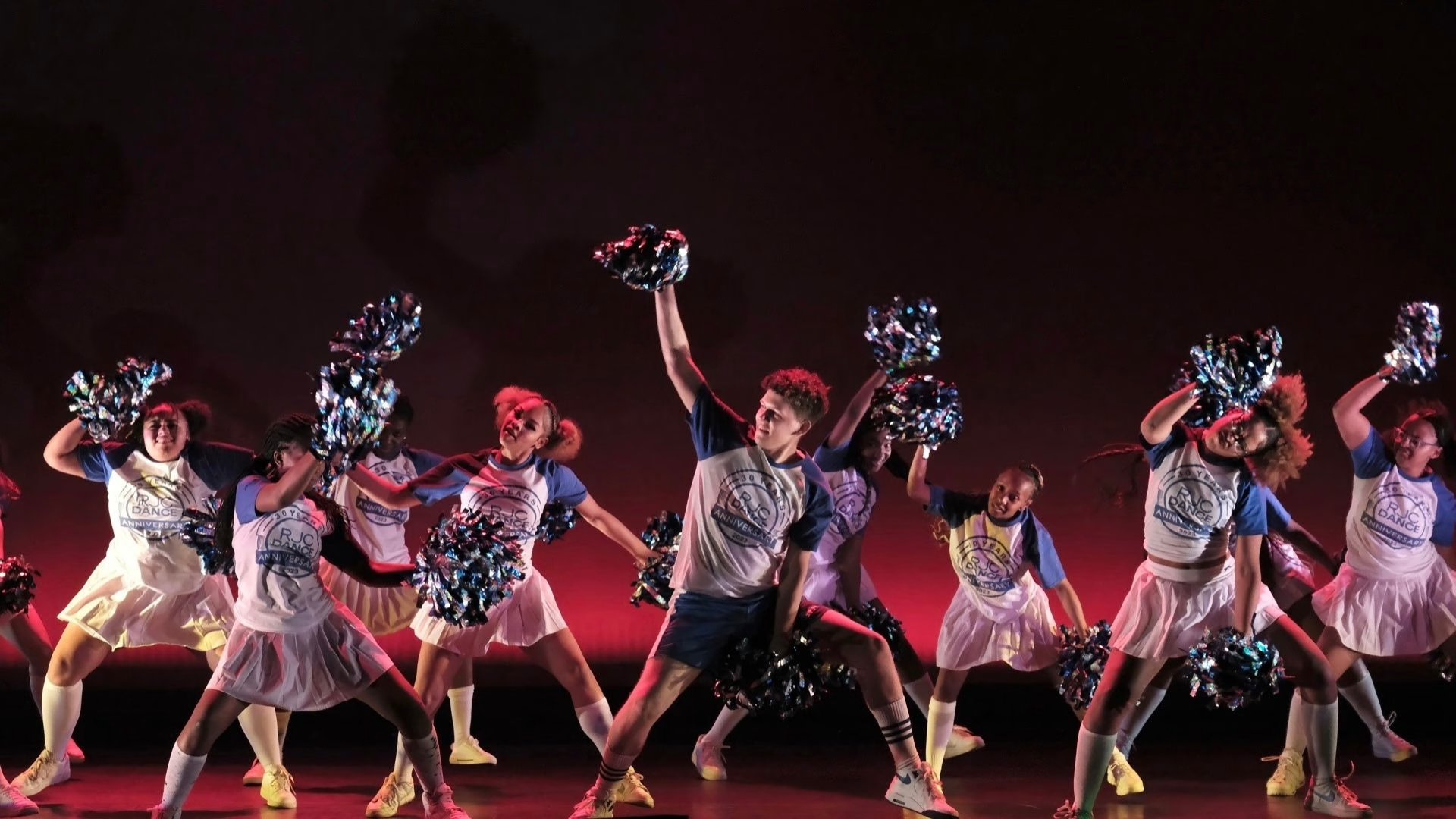📍 Ciccillo Matarazzo Pavilion, Ibirapuera Park, São Paulo
📅 On view through January 11, 2026
The 36th São Paulo Biennial opened on September 5 with poetry readings, live performances, and a ritualistic parade. Aiming to create a space for silence and introspective reflection, the biennial was shaped in the shadow of Brazil’s political turbulence. Lead curator Bonaventure Soh Bejeng Ndikung and his team (Alya Sebti, Anna Roberta Goetz, Thiago de Paula Souza, Keyna Eleison) drew inspiration from Conceição Evaristo’s 1990 poem Da calma e do silêncio: “There are sunken worlds that can only be entered through the silence of poetry.”
Rather than direct protest, the biennial addresses global conflicts, dehumanization, and vulnerabilities through silence and sensory awareness. This approach is evident in the exhibition’s focus on the visibility of African descent and Black Brazilian artists.
Hearing, Sound, and Solidarity
Palestinian artist Noor Abed and Lebanese artist Haig Aivazian’s performance Nothing Will Remain Other Than the Thorn Lodged in the Throat of this World (2025) recreates a war atmosphere with sounds ranging from the whir of bullets to the healing purrs of cats. The work explores empathy between bodies through vibrations, highlighting sound’s potential for healing.

Historical Connections and Abstract Memory
Frank Bowling’s South America series, begun in the 1960s, stands out as a visual expression of pan-Latin-American solidarity. His abstract paintings recall how African and European cultures intertwine in the South American context, signaling the biennial’s hope for rekindling historical ties.
Ecology, Estuary, and Fragility
The biennial adopts estuaries—where rivers meet oceans—as a metaphor. Forensic Architecture’s Delta-Delta: People’s Court (2025) uses testimonies to expose Shell’s oil pollution in Nigeria. Emeka Ogboh’s The Way the Earthly Things Are Going (2025) employs choir, smoke, and logs to convey the sensory dimensions of ecological destruction.
Nádia Taquary’s Certão Negro archive section presents the historical memory of Afro-Brazilian communities, while Precious Okoyomon’s Sun of Consciousness (2025), a garden made from Northeastern Brazilian soil, organically invites viewers into the exhibition. This creates a fluid curatorial structure that encourages wandering and returning.

Fiction and Complexity
While the exhibition texts and section titles may feel dense and scattered for some visitors, the fluid layout reinforces the biennial’s “meandering river” structure. Certain works, especially sound-based ones, resonate more deeply as the crowds thin out.
The Silence Before the Storm
Outside the biennial, Marcelo Evelin’s Batucada (2014/25) at Casa do Povo offered a contrasting atmosphere with rhythms struck on metal lids and the anarchic energy of bodies. This performance reads as a provocation against the biennial’s calm and silent curation, reminding us that resistance can also emerge through improvisation and collective energy.

Apartment No: 26 Note
The 36th São Paulo Biennial frames silence not as an aesthetic choice but as a form of resistance. Yet, this silence doesn’t mute the surrounding political and social noise; rather, it signals an intensification before the storm.














